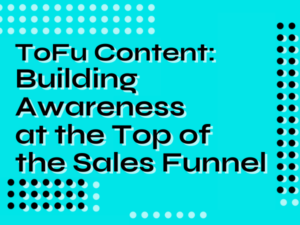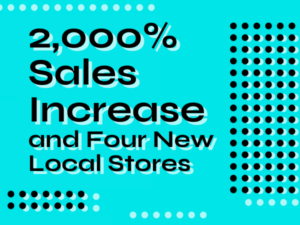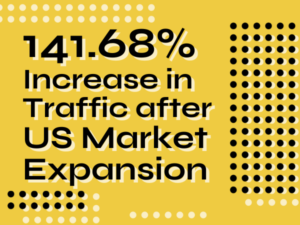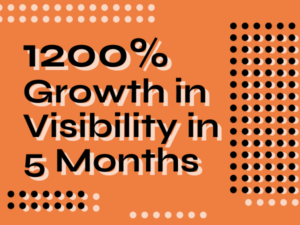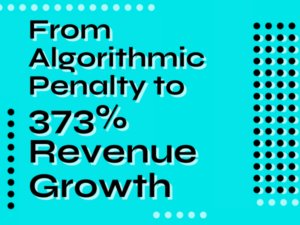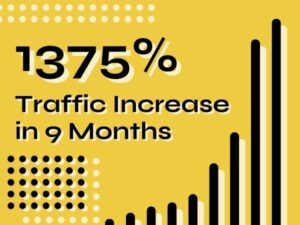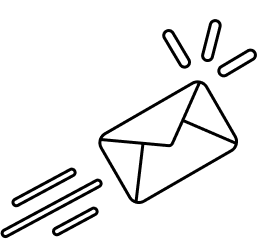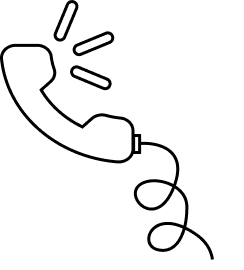Google has done it again! – that’s something you probably hear with every major Google update (and sometimes also with minor ones).
This time, however, it is a bit different. With the March 2024 core update, Google plans to reduce unhelpful and unoriginal content by 40%.
What does it mean? We would love to say that this is just about updated spam policies, so your website is most likely safe. The reality is… Well, a bit controversial, to say the least.
But let’s not be prophets of doom and gloom here, and instead focus on what the March 2024 core and spam updates are about, and what to do if you’re affected.
March 2024 Core Update Explained
Let’s start with the elephant in the room. With the March core update, Google has “deindexed” thousands of websites throughout the last two weeks.
Heads-up, like I thought we might, the March 2024 core update is starting to show itself… Here are some examples of drops (that are NOT sites impacted by manual actions.) These are sites that have been impacted by previous core updates or HCUs. I think we will see a lot more… pic.twitter.com/COoCQbz6R1
— Glenn Gabe (@glenngabe) March 8, 2024
Why quotation marks? Well, technically, the only way Google can decide to have your webpage deindexed – or, removed from Google search results – is through manual action. The core algorithm update itself cannot deindex websites. However, there are numerous reports on X regarding Pure Spam manual actions.
Google posted a detailed FAQ on pure spam manual action notices – check it out https://t.co/zXCKYV5wDA hat tip @gastonriera pic.twitter.com/dF4Fy4OaST
— Barry Schwartz (@rustybrick) March 14, 2024
The way this penalty was imposed raises questions, but before we go into that, let’s look at the main changes in the March 2024 update.
Helpful Content Updates Merged Into Core Updates
Helpful Content Update, or HCU, is definitely one of the most impactful changes in the core ranking system of the last few years – if not the entire Google update history. It’s safe to say that there were fewer websites that did not get hit by the initial release than those that needed to go into recovery mode.
The recovery timing is a little tough, too. While Google doesn’t specify any time frame for it, it usually takes a few months, and there’s no guarantee that the website in question will return to its former glory.
You can check for Google Search volatility using tools like Semrush Sensor:
Now, as the HCU classifier is always running, it was merged into the core update system. This means two things:
- Webmasters and SEOs don’t have to worry about unexpected HCU updates, which means more room for strategizing,
- Webmasters and SEOs will have to keep HCU in mind when preparing for future updates – something not that common (we do it already!)
How to Recover from Helpful Content Update?
Although “it depends” is a running joke in the SEO community, it applies here – there’s no one way to recover from HCU traffic or search ranking drops. Google hasn’t released any specific guidelines on this subject, apart from advising that you should create content focused on the readers and discouraging the production of low-quality content.
If your site was hit by a manual action or an algorithmic penalty, our SEO discovery package will let you find the potential culprits. You don’t have to trust our words – we have a proven track of recovering penalized websites.
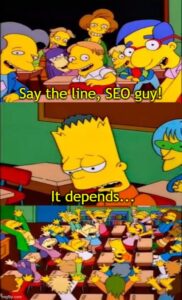
In May, the website’s revenue surged to $3,162, marking a peak increase of 373% compared to the initial declining figures.
From April to June, the website experienced a significant 55.96% growth in sessions, translating to an increase of 92,768 visitors.
The website also saw a 56.09% growth in new users during the same period, which represents 81,689 additional new users arriving at the site.
Overall user numbers were up by 57.77% year-over-year for the April-June quarter, equating to an uplift of 83,444 users.
From Algorithmic Penalty to 373% Revenue Growth | Home & Garden Niche
In this case study, we navigated our journey from saving a client’s website from a sudden Google algorithmic penalty to securing a staggering 373% boost in revenue within just a few months.
We didn’t just remedy the pressing issues but also implemented targeted content and link strategies.
We also helped the client tap into a new market by launching a comprehensive Spanish version of their site, reaching an entirely new, global audience.
Ultimately, our recovery tactics and expansion efforts resulted in a significant bounce-back from the algorithmic penalty and opened new paths for revenue generation.
Links Are Not a Major Ranking Factor Anymore, Sort Of
Google has referred to links as not the most important ranking factor for a long while. With the recent update, Google has removed the word important from its spam policies.
![Screenshot of Spam policies for Google web search from Google Search Central with [Google] 'uses links as a factor' highlighted](https://non.agency/wp-content/uploads/2024/03/image-31-1024x170.png)
Roger Montti from Search Engine Journal notes that this change shouldn’t be taken too seriously in the context of previous changes. However, it is a clear indicator of the direction Google is going.
Yet, this doesn’t mean that links are not worth building anymore!
Andreea SavelucLinks are not dead. If they were, why would Google invest so much effort in fighting fake or spammy backlinks? With my five-plus years in link building, I've watched the landscape evolve, and this latest update from Google is a clear signal.
It's pushing us towards creating meaningful, relevant content that naturally attracts quality links. The days of using PBNs or purchasing links from repurposed domains are numbered.
This update is set to refine the quality of links and draw a clear line between genuine link-building experts and those who just claim the title. It's about getting smart with our strategies, focusing on authenticity, relevance, playing by the rules and adding real value.
Outreach Team Leader
With this change, Google takes on manipulative link tactics. This update focuses on paid links that are meant to trick Google into thinking that pages are relevant or authoritative.
This is nothing new – PBNs used to be a big thing in the past, and Google has targeted them ever since. What is new is that now Google will explicitly check outgoing links for any paid link schemes.
Further Changes to the Quality of Search Results
Apart from merging HCU into the Google core and (potentially) devaluing links, Google has also made adjustments to improve the quality of its search results.
In other words, Google is further tightening the screws on spammy and low-quality content to create a better user experience for searchers – or at least it claims to do so.
The evaluations are now sharper in picking out not just usual spam but also thin and low-value content that is either misleading or focuses too much on feeding search engine crawlers for a higher ranking.
March 2024 Spam Updates: Everything New
Following the Google Blog, the March 2024 update has introduced new spam policies that dig into the spammy activities pointing towards scaled content abuse, site reputation abuse, and expired domain abuse.
Let’s see how each of these abuses influences the quality of the online content ecosystem and what Google is doing to curb their propagation.
Scaled Content Abuse
In a bid to ensure the internet isn’t filled with repetitive, low-quality content, Google has tweaked its policy on scaled content abuse. It refers to using automated systems or semi-automatic techniques to churn out large amounts of repetitive content purely for the purpose of manipulating search rankings.
This policy was first introduced when it was apparent that AI was being used to generate content at scale. Now, as methods have grown more sophisticated and pinpointing clear automation isn’t straightforward anymore, Google has decided to broaden its policy scope.
The focus is not just on the automation aspect of scaled content creation anymore. It is about penalizing mass-produced content aimed solely at boosting search rankings – regardless of whether it was made by AI, a human writer, or a mix of both.
Przemyslaw PuternickiWell, the writing has been on the wall for quite some time. I believed HCU was supposed to target all those sites that relied on AI-generated content en masse.
And now we get what I would call a double down from Google.
Basically, Google says that if you publish tons of content on your site, you have to make sure it's goo d and relevant content. Otherwise, they will come after you.
Of course, Google says it doesn't matter how you created all those articles. But both Google and we know you can't produce this kind of volume without the help of AI tools. And those are not as good at writing in-depth content as many would like.
Content Specialist
Site Reputation Abuse
The next issue addressed by Google’s revised policy is site reputation abuse. This happens when a website with an established reputation hosts low-quality content produced by third parties.
Google uses the example of a payday loan company, which might publish reviews on a highly-respected educational website to leverage its strong reputation and hence get a boost in search rankings.
Such tactics create confusion, misleading users who expect a certain standard of content based on the website’s established reputation.
Google has red-flagged such low-value, third-party content produced primarily for ranking purposes as spam. They are providing a two-month gap before bringing this policy into enforcement to give site owners enough time to make necessary changes.
Krzysztof KilewskiMake sure you understand it correctly: your (first-party) website might be affected if you host someone else's (third-party) content - not the other way around. Third-party might not even have a website 🙂
So make sure your website is free of unwanted content – many website owners are very often not aware they're hosting content that has been 'published' without their knowledge.
SEOs are saying this update is actually the same as Parasite SEO, and Google has just decided to change the way it's named. We need to wait until May to see Google's approach and the first results of this update.
Head of SEO at NoN Agency
Expired Domain Abuse
Last but not least, Google wants to deal with the shady practice of expired domain abuse. This tactic involves acquiring expired domains and repurposing them with low-quality content to maintain the high authority attained by the previous website.
This is problematic as it provides an undue ranking advantage by misleading Google into thinking the new content is part of the older site’s legacy.
However, it is also rather easy to spot, so it is only logical for Google to label expired domains, repurposed solely with the intention of piggybacking on their high authority while hosting low-ranking material, as spam.
New Google Update and Spam Policies: When to Panic?
While these new policies can initially feel like a cause for alarm, don’t hit the panic button just yet.
These updated guidelines primarily affect content quality manipulators who inflate their search rankings through unethical practices.
If your website policy is centered around creating high-quality and unique material that provides genuine value to readers, there’s nothing for you to fear, at least according to what Google officials say.
We always stick to the successful and long-lasting SEO strategies, and in times like these, we can’t stress enough how crucial it is to stay on top of Google’s guidelines and align your SEO strategies according to the latest changes – ideally, before they come into place.
Raf ChomskyStay calm and approach the situation with a level head. It's a fundamental principle not to implement any significant changes during periods of algorithmic updates. Once the initial impact has settled, I recommend conducting a thorough analysis to understand what has been affected and, crucially, how it impacts different stakeholders.
Identifying who has taken your place in search rankings can provide valuable insights into your next steps. For instance, if your content-focused website has lost significant keywords to YouTube videos, it likely indicates a shift in keyword intent.
In such cases, regaining your previous position quickly, or at all, might be challenging. To navigate these changes, I advocate for the PDCA cycle: plan and conduct a detailed analysis, implement changes, monitor the results, and then act on these insights. This cycle should be a continuous process for sustained success.
CEO of NoN Agency and Sustainable Growth Advocate
But Google Has Penalized My Website!
This is quite common – the previous core updates have also led to many websites seeing sudden decreases in visibility despite being compliant with Google’s guidelines.
Perhaps we need to speak more clearly that our systems are chasing what people like, so if you “chase the algorithm,” you’re behind. If you chase what people like, you’re ahead of the algorithm. pic.twitter.com/6knScZJbxP
— Google SearchLiaison (@searchliaison) November 16, 2023
As we mentioned before, the best way to check if the decrease in search results ranking is a direct consequence of manual action from Google or it is the result of an algorithmic change is to audit your website.
If you are still unsure, our SEO discovery package will help you find out what could have potentially gone wrong.
Whether you see this update as a threat or an opportunity, it’s crucial for website owners to stay proactive and constantly strive to improve their website’s quality of content and user experience.
After all, the end goal of Google’s latest core update, as per the company’s mission statement, is to organize the world’s information and make it universally accessible and useful.
Summary
With the major changes that come with the March 2024 Core Update and the new spam policies, there is undoubtedly a lot to adapt to – especially for website owners who may not have been focusing on quality content until now.
Adapting to these changes will require both time and effort.
However, if your focus remains on creating high-quality content, you probably have no reason to panic.
The best way forward? Staying informed, revising and adapting your SEO strategies in line with the new updates and policies, and making sure you are creating genuine value for users in the digital world.



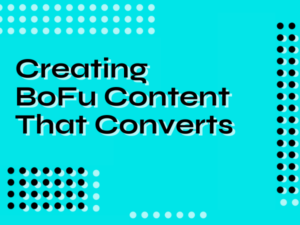

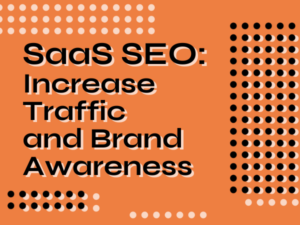
![Google March 2024 Core Update: What we know so far? [Don’t Panic]](https://non.agency/wp-content/uploads/2024/03/google-march-2024-core-update--300x225.png)
